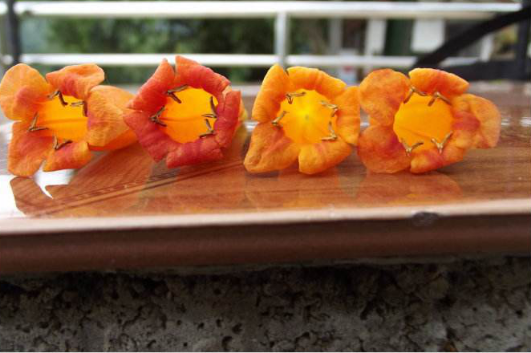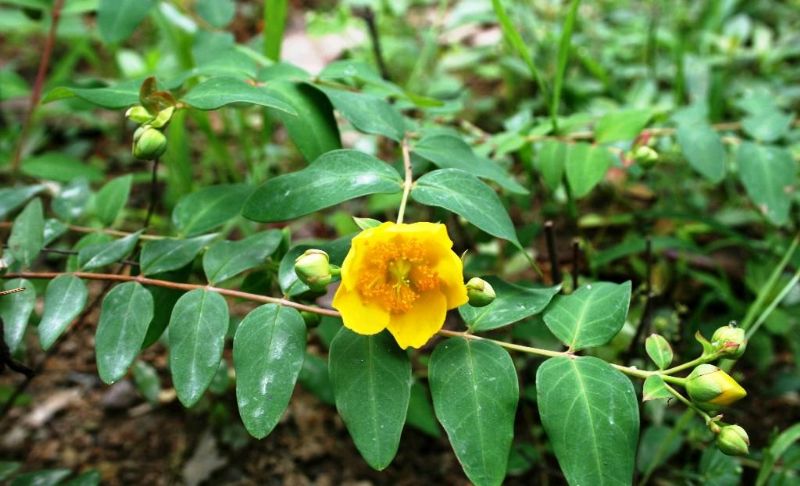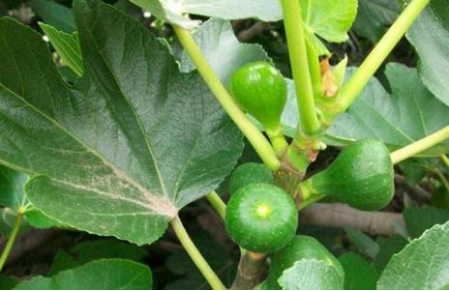Propagation methods of Burning Flowers
Because of its multi-season flowering, burning flowers can be collected in many seasons, so sowing and reproduction is the main method of reproduction. When the pericarp changes from cyan to dark brown, the fruit is harvested and dried in a windless place. after the pericarp is cracked, the seeds are gently knocked out, which can be picked and sown in spring and stored until the following spring when it is cold in winter. Because the seeds are small, they are generally sown. When the seed is sown at a temperature of about 25 ℃, keep the sowing bed moist, generally germinate in about 1 week, and the germination rate is very high. The seedling grows for 50-60 days, and when the seedling stem is slightly Lignified, it can be transferred to the field for cultivation, can be out of the nursery in 1-2 years, and can blossom in 3-5 years.

The above is the role of the burning flowers arranged by the editor for everyone, but remember to follow the doctor's advice when taking the burning flowers as medicine. I hope the supplementary breeding method of burning flowers will be helpful to you who want to raise fire and burn flowers at home!
Propagation methods of Burning Flowers Culture methods and matters needing attention of burning flowers
Bonsai Flower Network Guide: today, the editor of Flower Bonsai Network shares with you the breeding methods of burning flowers, the breeding methods of burning flowers and matters needing attention. Let's take a look.
The fire flower is a kind of small tree, the fire flower is orange, very bright, the blossom is like the flame burning, very vivid, today we come to understand the propagation method of the fire flower.
Sowing and propagation of burning flowers
Sowing and reproduction is the main way of propagation of burning flowers.
Burning flowers can blossom in many seasons, so we can collect seeds in many seasons, so we usually use the way of sowing and reproduction to reproduce burning flowers. The way we collect the seeds of burning flowers is to pick the ripe fruits of burning flowers, dry them in a windless environment, and gently knock down the seeds of burning flowers after they crack in the air, so that we can collect the seeds of burning flowers. We can store the seeds of burning flowers for the winter and sow the seeds at the right time.
We usually sow seeds in warmer spring, because the seeds of burning flowers are very small, so we usually sow them directly on the soil, then cover them with a thin layer of soil to maintain a temperature of about 25 °C. and at the same time keep the soil moist, it takes a week or so to sprout and plant three to five years to blossom.
Cutting Propagation of Burning Flowers
Generally speaking, the method of cutting propagation will not be used in the propagation of fire flowers, because the survival rate of fire flowers propagated by this method is relatively low. in order to improve the survival rate of cutting propagation, we can use the method of vegetative propagation. the method of high-altitude pressing can effectively improve the survival rate of cuttage propagation, and the fire flowers propagated by this method are generally used in potted plants.
Fire flowers successfully propagated by this method usually blossom in a year or two.
Culture methods and points for attention of Burning Flowers
Burning flower is a kind of woody plant, which is strong in nature and easy to breed. It is also full of artistic conception to use burning flowers as ornamental trees and to watch their gorgeous flowers.
The culture method of burning flowers soil
Huo Chaohua likes the soil with deep and fertile soil, and the neutral or slightly acidic soil with good drainage is better, which can tolerate barren and needs to apply a certain amount of base fertilizer when planting.
Light and temperature
Burning flowers like the light and the warm growing environment. Burning flowers can be heat-resistant but not cold-resistant. The suitable temperature for growth is between 23 ℃ and 30 ℃. It can withstand high temperature of about 0 ℃ in winter, but it can not be kept at low temperature for a long time, which will make the plant frostbite. Generally, fire-burning flowers are cultivated in China, which can be planted in open field in South China, and potted plants are needed in other areas in winter and moved into indoor conservation. Burning flowers like the sunny growth environment, there is sufficient light will grow well, but can also withstand semi-shade.
Watering and fertilizing
The demand for water and fertilizer for burning flowers is not high, so it is necessary to pay attention to replenishing water in time during the growth period, especially in times of high temperature and drought. Fertilization needs to be carried out according to the fertility of the soil, and appropriate supplementary fertilizers are needed during the growing period, mainly thin fertilizer, fertilizing 3-5 times a year, more nitrogen fertilizer can be applied, and phosphorus and potassium fertilizer should be increased in autumn.
Matters needing attention in the Culture of Burning Flowers
Propagation of fire and burning flowers is commonly used by cutting, sowing or striping, all of which can be carried out in spring.
Common diseases and insect pests
The common disease of burning flowers is blight, which mainly occurs when it is rainy in spring and suffers greatly. Insect pests are mainly aphids, Spodoptera litura, large and small ground tigers and beetles, and so on. These pests will more or less harm the burning flowers and need to be controlled in time.
Pruning
Burnt flowers are more pruning-resistant plants, which can be pruned frequently to maintain their plant type.
Culture methods of burning flowers 1. Soil
Burnt flowers like fertile and deep soil, preferably neutral or slightly acidic soil with good drainage. Although the burning flower originated in the tropics and has a strong resistance to barren, we still need to apply a certain amount of base fertilizer to it when planting.
Second, light temperature
Burning flowers like the light and the warm growing environment. The fire is heat-resistant but not cold-resistant. The suitable temperature for growth is between 23 ℃ and 30 ℃, and it can withstand about 0 ℃ in winter. However, the burning flowers should not be kept at low temperature for a long time, otherwise the plants will be frostbitten. Burning flowers like the growth environment with plenty of sunshine, and only when there is enough light will they grow well, so they should be exposed to the sun.
III. Water and fertilizer
The demand for water and fertilizer for burning flowers is not high, and it is necessary to pay attention to replenish water in time during the growth period, especially in times of high temperature and drought. Fertilization needs to be carried out according to the fertility of the soil, and appropriate supplementary fertilizers are needed during the growing period of burning flowers, mainly thin fertilizer, fertilizing three to five times a year, fertilizing needs to pay attention to the proportion of all kinds of fertilizers, and increase the application of phosphorus and potassium fertilizer in autumn.
Understand the method of fire flower culture, then we will understand how to deal with the diseases and insect pests that will occur when raising fire flowers.
- Prev

Propagation method of Prunus mume
1. Cutting propagation in spring or autumn, select several strong growing branches, cut them into cuttings 10-15 cm long, and soak them with auxin or rooting powder. The golden plum seedling bed should be watered thoroughly, and then it can be cut when the water lags behind, and the soil should be loosened and irrigated frequently.
- Next

How to grow figs
1. Containers. Fig roots are more developed, if not directly planted on the ground, it is necessary to choose a relatively large container cultivation, the best is to use that large tile jar, and it needs a wider space to grow, preferably in the building open-air balcony or courtyard. 2. Soil
Related
- Fuxing push coffee new agricultural production and marketing class: lack of small-scale processing plants
- Jujube rice field leisure farm deep ploughing Yilan for five years to create a space for organic food and play
- Nongyu Farm-A trial of organic papaya for brave women with advanced technology
- Four points for attention in the prevention and control of diseases and insect pests of edible fungi
- How to add nutrient solution to Edible Fungi
- Is there any good way to control edible fungus mites?
- Open Inoculation Technology of Edible Fungi
- Is there any clever way to use fertilizer for edible fungus in winter?
- What agents are used to kill the pathogens of edible fungi in the mushroom shed?
- Rapid drying of Edible Fungi

